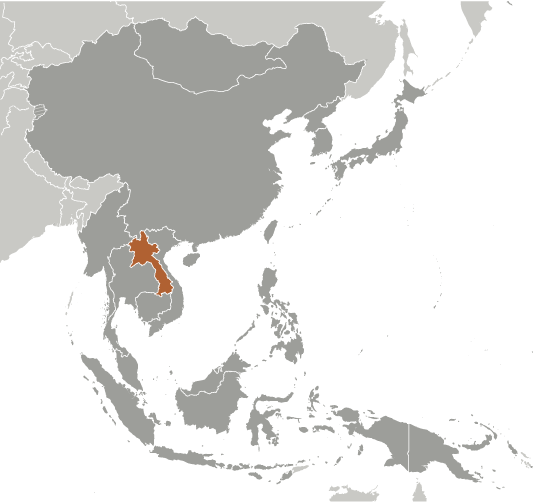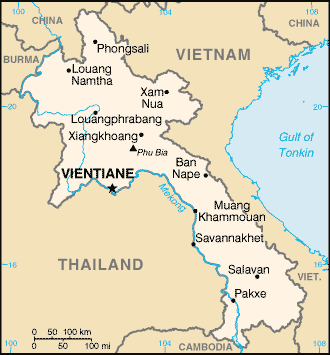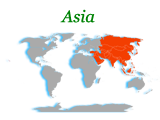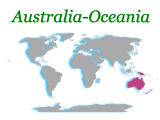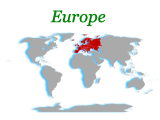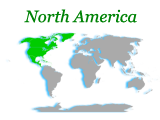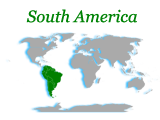Modern-day Laos has its roots in the ancient Lao kingdom of Lan Xang, established in the 14th Century under King FA NGUM. For 300 years Lan Xang had influence reaching into present-day Cambodia and Thailand, as well as over all of what is now Laos. After centuries of gradual decline, Laos came under the domination of Siam (Thailand) from the late 18th century until the late 19th century when it became part of French Indochina. The Franco-Siamese Treaty of 1907 defined the current Lao border with Thailand. In 1975, the Communist Pathet Lao took control of the government ending a six-century-old monarchy and instituting a strict socialist regime closely aligned to Vietnam. A gradual return to private enterprise and the liberalization of foreign investment laws began in 1988. Laos became a member of ASEAN in 1997.
Population
6,993,767 (July 2010 est.)
Country comparison to the world:100
Nationality
Noun:Lao(s) or Laotian(s)
Adjective:Lao or Laotian
Ethnic groups
Lao 55%, Khmou 11%, Hmong 8%, other (over 100 minor ethnic groups) 26% (2005 census)
Religions
Buddhist 67%, Christian 1.5%, other and unspecified 31.5% (2005 census)
Languages
Lao (official), French, English, and various ethnic languages
Country Name
Conventional long form:Lao People's Democratic Republic
Conventional short form:Laos
Local long form:Sathalanalat Paxathipatai Paxaxon Lao
Local short form:Pathet Lao (unofficial)
Government Type
Communist state
Capital
Name:Vientiane (Viangchan)
Geographic coordinates:17 58 N, 102 36 E
Time difference:UTC+7 (12 hours ahead of Washington, DC during Standard Time)
Administrative divisions
16 provinces (khoueng, singular and plural) and 1 capital city* (nakhon luang, singular and plural); Attapu, Bokeo, Bolikhamxai, Champasak, Houaphan, Khammouan, Louangnamtha, Louangphrabang, Oudomxai, Phongsali, Salavan, Savannakhet, Viangchan (Vientiane)*, Viangchan, Xaignabouli, Xekong, Xiangkhoang
Independence
19 July 1949 (from France)
National Holiday
Republic Day, 2 December (1975)
Constitution
promulgated 14 August 1991; amended in 2003
Legal system
based on traditional customs, French legal norms and procedures, and socialist practice; has not accepted compulsory ICJ jurisdiction
Suffrage
18 years of age; universal
Executive branch
Chief of state:President Lt. Gen. CHOUMMALI Saignason (since 8 June 2006); Vice President BOUN-GNANG Volachit (since 8 June 2006)
Head of government:Prime Minister BOUASONE Bouphavanh (since 8 June 2006); Deputy Prime Ministers Maj. Gen. ASANG Laoli (since May 2002), Lt. Gen. DOUANGCHAI Phichit (since 8 June 2006), SOMSAVAT Lengsavat (since 26 February 1998), and THONGLOUN Sisoulit (since 27 March 2001)
Cabinet:Ministers appointed by president, approved by National Assembly
(For more information visit the World Leaders website)
Elections:president and vice president elected by National Assembly for five-year terms; election last held on 8 June 2006 (next to be held in 2011); prime minister nominated by the president and elected by the National Assembly for five-year term
Election results:CHOUMMALI Saignason elected president; BOUN-GNANG Volachit elected vice president; percent of National Assembly vote - 100%; BOUASONE Bouphavanh elected prime minister; percent of National Assembly vote - 97%
Legislative branch
unicameral National Assembly (115 seats; members elected by popular vote from a list of candidates selected by the Lao People's Revolutionary Party to serve five-year terms)
Elections:last held 30 on April 2006 (next to be held in 2011)
Election results:percent of vote by party - NA; seats by party - LPRP 113, independents 2
Judicial branch
People's Supreme Court (the president of the People's Supreme Court is elected by the National Assembly on the recommendation of the National Assembly Standing Committee; the vice president of the People's Supreme Court and the judges are appointed by the National Assembly Standing Committee)
Political Parties and Leaders
Lao People's Revolutionary Party or LPRP [CHOUMMALI Saignason]; other parties proscribed
Political pressure groups and leaders
NA
International organization participation
ADB, APT, ARF, ASEAN, CP, EAS, FAO, G-77, IBRD, ICAO, ICRM, IDA, IFAD, IFC, IFRCS, ILO, IMF, Interpol, IOC, IPU, ISO (subscriber), ITU, MIGA, NAM, OIF, OPCW, PCA, UN, UNCTAD, UNESCO, UNIDO, UNWTO, UPU, WCO, WFTU, WHO, WIPO, WMO, WTO (observer)
Diplomatic representation in the US
Chief of mission:Ambassador PHIANE Philakone
Chancery:2222 S Street NW, Washington, DC 20008
Telephone:[1] (202) 332-6416
FAX:[1] (202) 332-4923
Diplomatic representation from the US
Chief of mission:Ambassador Ravic R. HUSO
Embassy:19 Rue Bartholonie, That Dam, Vientiane
Mailing address:American Embassy Vientiane, APO AP 96546
Telephone:[856] 21-26-7000
FAX:[856] 21-26-7190
Flag description
three horizontal bands of red (top), blue (double width), and red with a large white disk centered in the blue band

